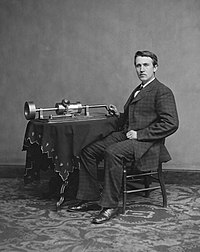
Photo from wikipedia
The current study examines the relationship between financialization, managers’ incentives, and the enterprise’s innovation. Based on the principal-agent and incentive theories, this study proposes a research model with two management… Click to show full abstract
The current study examines the relationship between financialization, managers’ incentives, and the enterprise’s innovation. Based on the principal-agent and incentive theories, this study proposes a research model with two management incentives as moderating variables between financialization and the enterprise’s innovation. First, we analyze the direct relationship between financialization and the enterprise’s innovation. Second, we examine the moderating effect of managers’ equity incentive and compensation incentives on the relationship between entity financialization and the enterprise’s innovation in high-tech/non-high-tech enterprises and state-owned and non-state-owned enterprises. This study covers the most recent updated data from both A-share listed companies in the Shenzhen and Shanghai stock exchange in China from 2009 to 2019. This study’s finding indicates a significant negative impact of entity financialization and the enterprise’s innovation. It means that the entity financial has a significant “crowding-out” effect on the enterprise’s innovation. This study also confirms that management incentives cannot effectively suppress a “crowding-out” impact of entity financialization on firm innovation because of the principal-agent severe problem in financialization. Finally, considering the heterogeneities of property rights and degrees of dependence on the enterprise’s innovation, a “crowding-out” effect of entity financialization on the enterprise’s innovation is more significant in high-tech and state-owned enterprises. Managers’ equity incentive significantly affects the enterprise’s innovation in high-tech enterprises, while the managers’ compensation incentive affects the enterprise’s innovation in state-owned enterprises. Our study could help the enterprise to improve the company manager’s incentive and provide the optimal assets allocation to improve the enterprise’s innovation ability. Lastly, this study provides significant policies and recommendations for the public sector high-tech enterprise and private sector high-tech enterprises. Moreover, policies and recommendations are fruitful for the public sector non-high-tech enterprise and private sector non-high-tech enterprise.
Journal Title: Frontiers in Psychology
Year Published: 2022
Link to full text (if available)
Share on Social Media: Sign Up to like & get
recommendations!